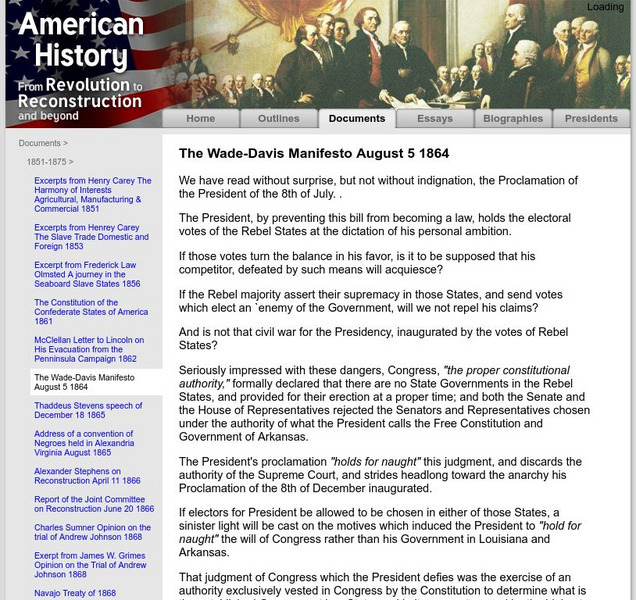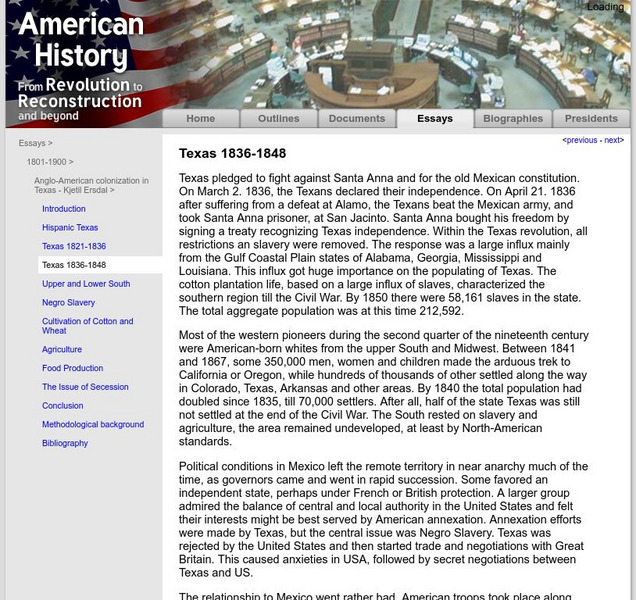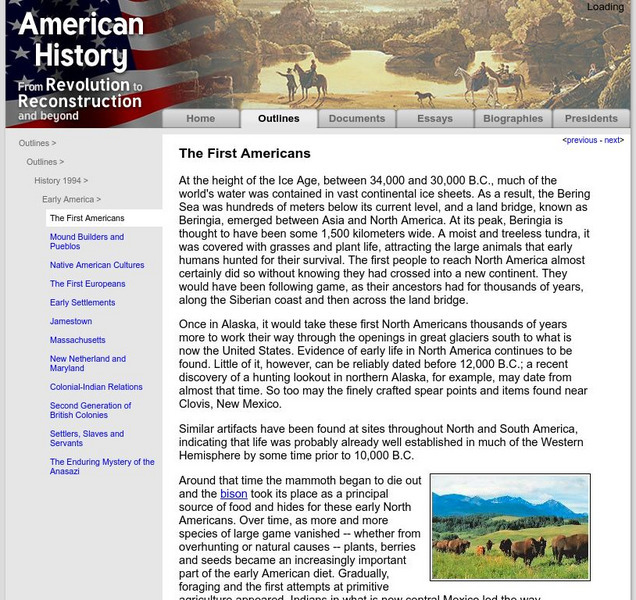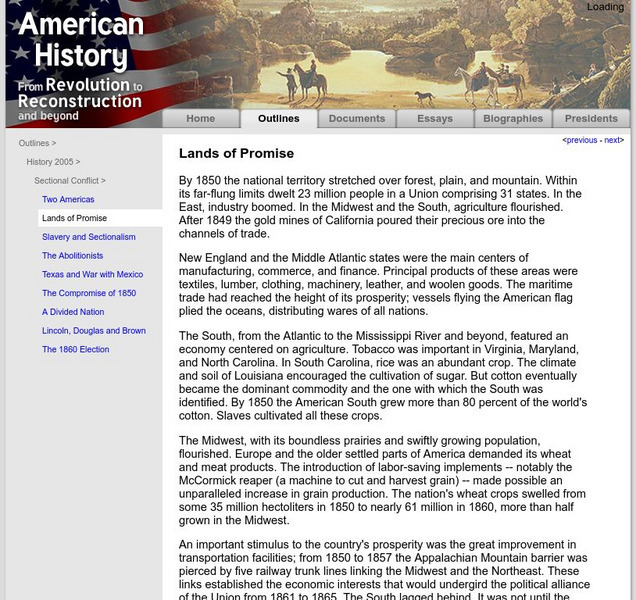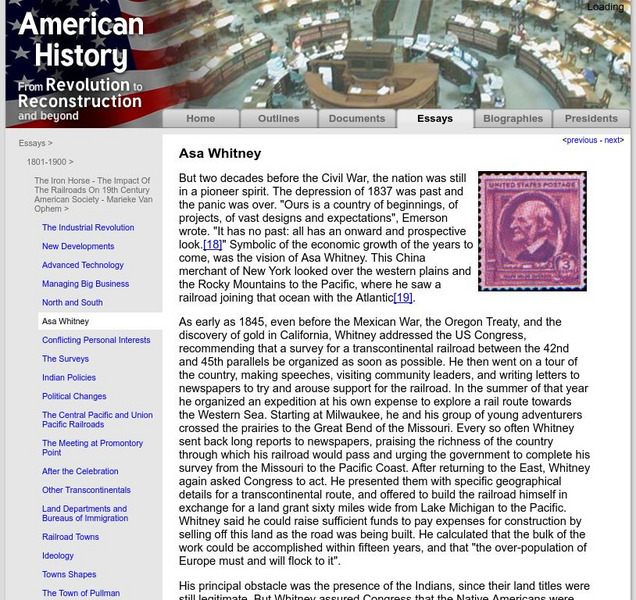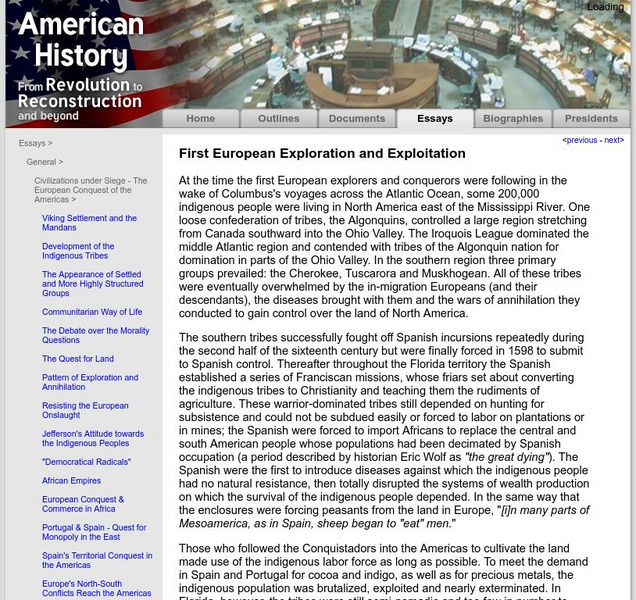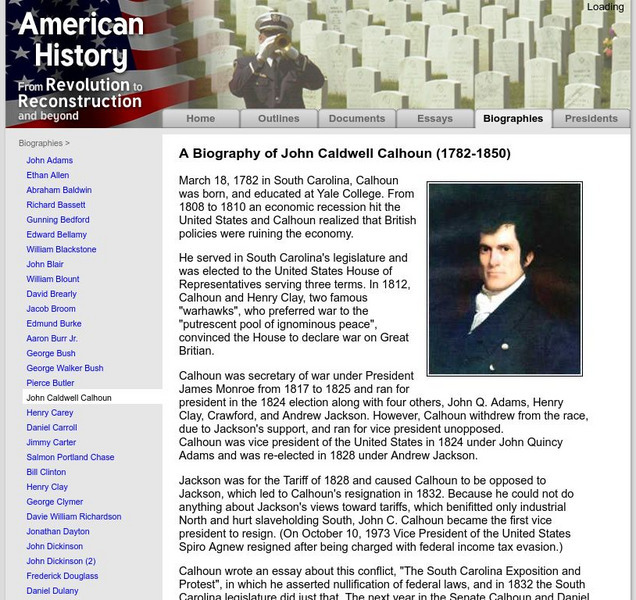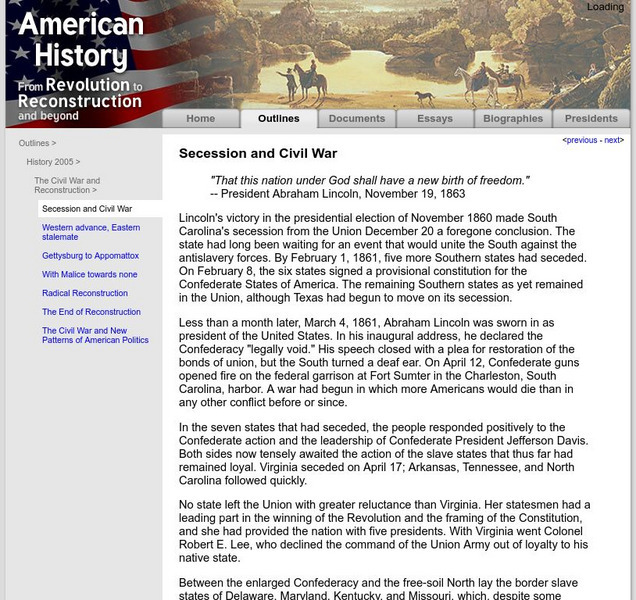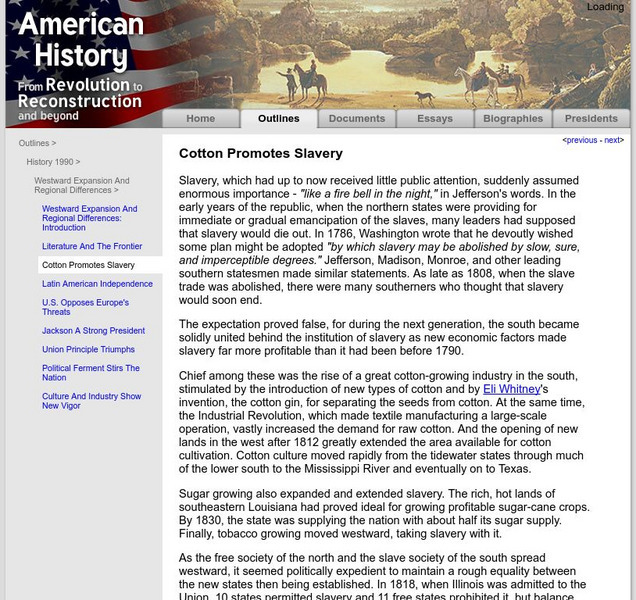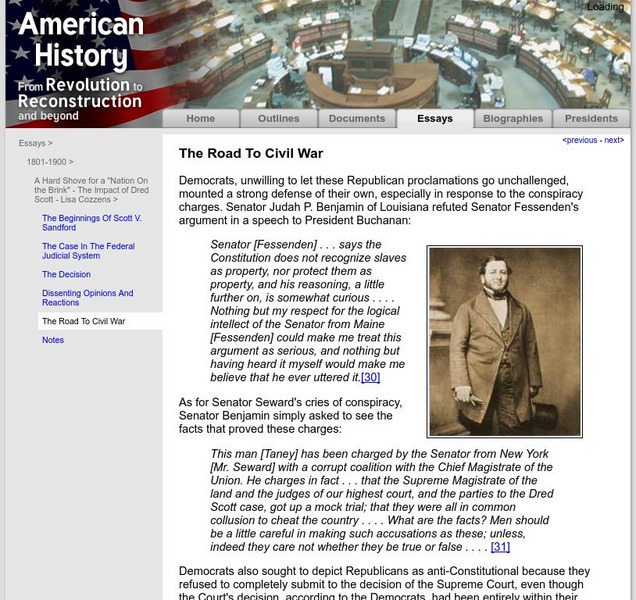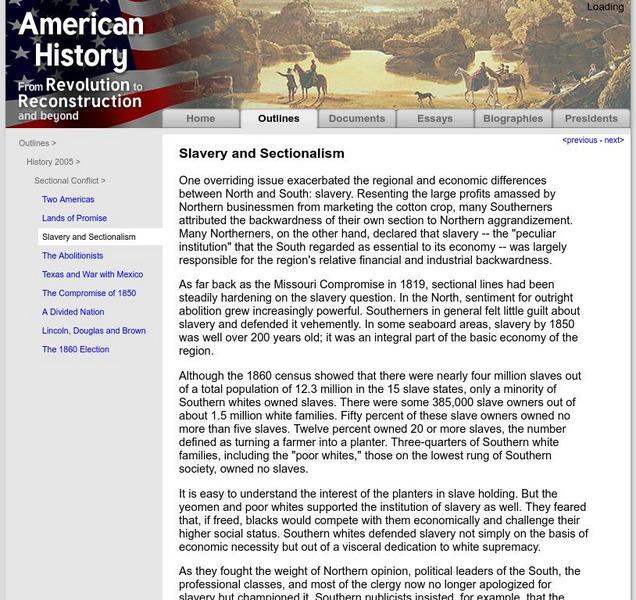Ducksters
Ducksters: South Carolina State History for Kids
Kids learn about the history and timeline of the state of South Carolina including early explorers, Native Americans, English colony, American Revolution, and the Civil War.
University of Groningen
American History: Documents: The Wade Davis Manifesto August 5 1864
View the complete text of the Wade-Davis Manifesto which describes a bill proposed for the reconstruction of the South. The bill passed both houses but was then vetoed by President Lincoln.
US Army Center
U.s. Army Center of Military History: Charles Cotesworth Pinckney
A good biography of the life of a famous general in the American Revolution, and later a delegate to the Constitutional Convention from South Carolina.
A&E Television
History.com: 7 Famous Loyalists of the Revolutionary War Era
From a son of Benjamin Franklin to a Mohawk leader to the governor of Massachusetts, these men chose to side with the British. In a way, the American Revolution was also a civil war. By 1774, American colonists were divided into two...
University of Groningen
American History: Essays: Colonization in Texas: Cultivation of Cotton and Wheat
Discusses the cotton economy in the Lower and Upper South of Texas in the 1800s, and the role transportation played in its growth, or lack thereof in some regions. Wheat was more widely grown in the Upper South where the yeomen farmed.
University of Groningen
American History: Outlines: The Divided South
Overview of the challenges African Americans in the South faced and attempts to overcome the rising issues of discrimination and segregation after Reconstruction.
University of Groningen
American History: Outlines: The British Move South
Brief overview of the Revolutionary War in the South including campaigns of Savannah, Charleston and the significant battle at Cowpens, South Carolina.
University of Groningen
American History: Essays: Anglo Amer. Colonization in Texas: Texas 1836 1848
A brief look at the declaration of independence from Mexico by Texas in 1836, the removal of restrictions on slavery, and how this dramatically increased the population and led to a much greater reliance on the cotton industry in the...
University of Groningen
American History: Outlines: Early America: The First Americans
Gives an overview of the timeline of humans establishing themselves in the Americas, starting with the crossing of the Bering Sea land bridge some time before 12,000 B.C. Archaeological evidence shows humans moving south and eventually...
A&E Television
History.com: Revolutionary War Timeline
The Revolutionary War was an insurrection by American Patriots in the 13 colonies to British rule, resulting in American independence.
University of Groningen
American History: Outlines: Lands of Promise
Outline about the promising economic times of an expanding America during the 1800s, including changes taking place in New England, the South, the Midwest and West.
University of Groningen
American History: Essays: The Iron Horse: Asa Whitney
From a lengthy essay on the history of the railroad in the United States. This section describes what Asa Whitney did to promote the idea of a transcontinental railroad in the North. His efforts provoked the South into campaigning for...
University of Groningen
American History: Essays: First European Exploration and Exploitation
Essay on the exploitation and decimation of indigenous peoples as a result of European exploration, settlement, and colonization in North and South America.
University of Groningen
American History: Biographies: John Caldwell Calhoun
This biographical resource on John Calhoun points out Calhoun's resignation, the first vice-president to resign from active office. Calhoun opposed Jackson's affirmative stand on the Tariff of 1828 which favored the Industrial North over...
University of Groningen
American History: Outlines: Secession and Civil War
Part of a unit on the Civil War and Reconstruction, this section provides an overview of the formation of the Confederacy and subsequent secession of states in the South.
University of Groningen
American History: Outlines: Cotton Promotes Slavery
A brief history of how the economic growth of the South became dependent on the work of slaves and how this solidified the unity of the southern states. Links throughout the text will take to you sites containing relevant information.
University of Groningen
American History: Essays: Impact of Dred Scott: The Road to Civil War
After the Dred Scott decision by the US Supreme Court, the friction between the North and South over slavery escalated, and the North began to fear that they might not be able to prevent slavery from spreading into their states. The Dred...
University of Groningen
American History: Outlines: Slavery and Sectionalism
Article outlines the conflict between the North and South over the institution of slavery.
University of Groningen
American History: Outlines: The Abolitionists
Outline of the beginning of the Abolitionist Movement in a pre-Civil War America as part of the sectional conflict between the North and South.
University of Groningen
American History: Outlines: Radical Reconstruction
Article outlining the development of new thought, legislation, politics, and the Reconstruction plans in the South.
University of Groningen
American History: Outlines: The End of Reconstruction
Overview of the gains, corruption and ongoing conflict in the South during the later stages of Reconstruction.
US Army Center
U.s. Army Center of Military History: Charles Pinckney
This resource presents a biographical sketch of Charles Pinckney, a delegate to the Constitutional Convention from South Carolina. It also covers his role in the American Revolution.
Bill of Rights Institute
Bill of Rights Institute: Charles Pinckney
Born near Charles Town (now Charleston), South Carolina, Charles Pinckney was the child of a wealthy family. He received a first-rate education and became an accomplished lawyer. Pinckney joined the state militia during the American...
University of Groningen
American History: Essays: Anglo American Colonization in Texas: Agriculture
Outlines the agricultural differences between the Upper and Lower South of Texas prior to the Civil War.



